FACS NEWSLETTER
Taiwan Market Forecast for Electronic Chemicals
发布时间:2016年05月06日 来源:中国化学会
Li-Mei Chen and Chao-Jen Wang
Electronic Chemical Technology Division Union Chemical Laboratories, ITRI
1. Introduction
The market for electronic and optic-electronic products has been growing so fast in these years in Taiwan that it accounts for a total value over 46 billion USD in 2000. It almost took 30% of export values and retained more than 15% yearly growth rate, which justified its lead among various industries. Integrated circuit, printed circuit board, liquid crystal display, and printer imaging technology are the most active areas in electronic and optic-electronic fields. In the last few years, the investment was approximate 1 billions USD upon these four industries, which made them the essential manufactures in Taiwan. Blooming electronic and optic-electronic industry demands plenty of key components and various electronic chemicals to support its success. On the other hand, the future of electronic and optic-electronic depends on success of electronic chemicals and key components. Figure 1 indicates how electronic chemicals are connected to key components and electronic/optic-electronic products. Silicon wafer, photoresist, high purity gas, alkaline or acidic solvent, packaging materials and CMP slurries are needed for IC industrial, while color filter, polarizer and retardation film are considered necessary for LCD. In this context, the market for IC electronic chemicals is addressed.
|
|
After weathering through the global depression of semiconductor industry from 1998 to the first half of 1999, manufacturers of IC chemicals finally cheered again due to the resurgence of downstream industries in the last half of 1999, even though the future of the market was no longer as prosperous as before. During this period, some companies struggled and survived the upside-down recession, becoming vigorous gradually, while others declined. The recognition that too high a risk for a single company to face the severe challenge urged industry to adopt alliance tactics, in an effort to consolidate their own competence. It was in 1999 that much drastic variety occurred in global IC chemicals industry.
2. Overseas Market/Industry Trend Analysis
2.1 Photoresist
According to the estimation of Dataquest, the global market scope of photoresist for IC industry was around 0.68 billion USD in 1998 with a growth alleged to be 8~10%, whereas the growth for demand was only 6%. The reason why growth of market was larger than that of demand lay in that the demand for DUV photoresist which was more expensive than g-line and i-line photoresist increased steadily. The market was shared by 12 companies. In 1998, TOK, taking 27% of the market, dominated the proportion, as revealed in Figure 2. The next are Shipley 18%, JSR 17%, Arch 13%, and Sumitomo 11%, respectively. Clariant, IBM, Nippon, Nagase, and Shin-Etsu partook of the remainder 14%. Among the companies, Shin-Etsu was a new player who didn't have any g-line or i-line products, but instead directly strode into DUV photoresist business and succeeded in taking parts of the market. Apparently, as long as maneuvering was exercised properly, new comers still could have the chance to get in this field. However, since the gap of market possession among the first five companies was small, the IC photoresist industry was actually a monopolized business.
Because of the urgent requirement on DUV when line width was scaled down beyond 0.25?m, photoresist for DUV was becoming increasingly popular. With the continual evolution of wavelength from 248nm, 193nm, toward 157nm, DUV photoresist would be the mainstream beyond 0.10?m. As a whole, Dataquest predicted that the compound annual growth on demand of IC photoresist is 7% in the near future to 2003, while that for market value will be 10~12%. In 2003, DUV photoresist will take 25.6% of annual global demand and a corresponding market value up to 50.9% because of its high unit price. As far as industrial trend was concerned, the entrance barrier has been high owing to availability of raw materials and know-how. Moreover, the additional issues such as shortening of product life time and even more expense for R&D all will inevitably push for enterprise agglomeration in the future.
|
|
2.2 CMP
The multi-level interconnect necessitates global planarization prior to photolithography to improve yield, which has made an outstanding achievement in market value of CMP chemicals in these two years. In 1999, the market scale of CMP related consumable was estimated to be about 0.21 billion USD in US. The slurry market is monopolized, either for oxide or for metal polishing, by Cabot and Rodel, as presented in Figure 3. The market value of CMP consumable in US is foresaw being able to sustain a high annual growth rate of 40% in the near future to 2003, which amounts to a market value of 0.7 billion USD at that time. Because of such an utterly admirable market growth, renowned worldwide companies like EKC, Clariant, Arch, Bayer, and Dupont all act zealously for a fight for this market, facing on the expansion of Cabot and Rodel.
| Oxide | Metal |
 |
 |
|
Source:Chemical Market Reporter,1999. |
|
2.3 Wet chemicals
The global market scope of IC wet chemicals in 1999 and annual growth rate to 2001 were estimated to be 0.77 billion USD and 5~10%, respectively.When taking a closer look at the possession of US market, as shown in Figure 4, Ashland was still at dominant position, even though its market share declined a little when compared to that of 1995 (50%?48%). The more noticeable change came from turning down of Arch (the former Olin) and rise of General Chemical and Mallinckrodt-Baker. The percentage of market share of Arch dropped from 30% in 1995 to 22%. The latter two companies both took only 7% of market in 1995, but after actively improving product grade and expanding production line, they took over parts of market from Arch and Ashland little by little.
|
|
The final winner in market was hedged about with the even tighter requirements for IC wet chemicals in future sub-micron process and high cost in establishment and maintenance of selling route, particularly after almost two years of depression. Many small companies eager to jump into this industry in 1998 were let down and put themselves in a possible merge with other large companies.
In the future, the adoption of chemical management system and waste liquid recycling system will be a tendency. Moreover, Cu damascene will be expected to become a standard process in 2001. How to develop appropriate clean solution tallying with strict demand on purity, particle counts, and metal ion contamination will be the first concern for wet chemicals companies.
3. Domestic Market/Industry Trend Analysis
3.1 Photo chemicals
In 1999, the local market scope of photo chemicals, including photoresist, stripper, developer, and EBR, was estimated to be around 0.12 billion USD. The production and marketing structure was shown in Figure 5. The marketing in Taiwan was, so far, grasped by international companies such as TOK, Shipley, Sumitomo, JSR, and Shin-Etsu. Two local companies, Everlight and Eternal, had collaborated with UCL/ITRI in developing photoresist, aggressively hoping to share the market. As to stripper, the market was monopolized by Ashland (Product ACT) and EKC. TOK, Fuji-Olin, and Tokuyama are major supplier of IC developer.
|
|
3.2 CMP
The domestic market of CMP consumable was estimated to be 0.1 billion USD in 1999, which was almost dominated by Cabot who took 80~85% proportion of the scale. The next was Rodel who had 5~10% of the market, while the others were supplied by Fujimi and EKC. Two local companies, Ethernal and Wah Hong, transferring CMP slurry technology from UCL/ITRI, were preparing to stride into this market.
3.3 Wet chemicals
The 1999 domestic market for IC wet chemicals was calculated to be NT2.5~3.0 billion. The production and marketing structure diagram was shown in Figure 6. The major players consisted of Merck-Kanto and Mitsubishi. However, Ashland Union Electronic Chemical, joint venture of Ashland US and Union Petrochemical, and Mitsubishi Gas(Japan) were eager to get in Taiwan's market and expected to begin mass production by the middle of 2000, whereas Tokuyama only concentrated on IPA product. One thing worthy of mentioned here was that since wet chemicals for IC industry was similar to that for TFT-LCD industry, the above domestic wet chemicals companies had also provided TFT-LCD companies with their product ever since TFT-LCD industries started to flourish in Taiwan in 1999. This is the difference from US or Japan.
|
|
4. Industry and Product Trend
To sum up, the growth of future market for IC chemicals could be anticipated to be better than that of the other chemical products. However, when compared to the growth rate from 1993 to 1997, frequently a few tens of expansion, the pace has slowed down recently. At the same time, the even increasingly competition and cost-down requests from IC fabs make IC chemical companies have no choice but to look for an alliance that will help to expand their production lines or distribution, as listed in Table 1. The tendency to form an alliance for solidification of their own position could be found most evidently for high purity gas makers who are very conscious of the importance of chemical treatment system.
Concerning CMP consumable, the slurriless pad developed by 3M deserves to be mentioned here. It is still premature to say what the possibility to substitute traditional CMP technology is. However, since each pad can substitute for 15 gallons of slurry and response from end user looks so far so good, some reports predict that this kind of slurriless pad will own over 17% of the market in 2003.
In addition to process evolution toward Cu damascene, the mass production of 12-inch wafers gives another cause worthy of notice for IC chemicals in the future. This is because that the bigger size the wafer is, the more fragile it becomes, which perplex wafer handling in process. Moreover, will the traditional cleaning, etching, and stripping processes in batch, 20~25 wafers at a time, be replaced by just single wafer spinning and spraying? Will wet etching and cleaning be replaced with plasma related dry etching and cleaning process as line width gets increasingly narrow? Since IC chemicals are process orientated, a tiny change of process will demand different chemicals with possible changes in physical properties, chemical properties, viscosity, and operating temperature, and thus influencing the market growth severely.
Table 1. The merge and collaborate status of global IC chemicals industry
|
Company |
Merge/collaborate target |
Notes |
|
Arch |
Fujifilm |
Photoresist |
|
Allied Signal |
Southwest Microelectronic Materials |
Etchant |
|
Ashland |
Union Petrochemical |
Wet-process chemicals |
|
Merck |
Praxair |
High purity gases、Wet-process chemicals |
|
Rohm & Haas |
Rodel |
CMP |
|
BOC |
FSI |
Chemical treatment system |
|
Air Liquide |
CSI |
Chemicals product and operation system |
|
Air Product |
USFilter |
Chemical treatment system |
DATA source:Chemical Market Reporter,1999







